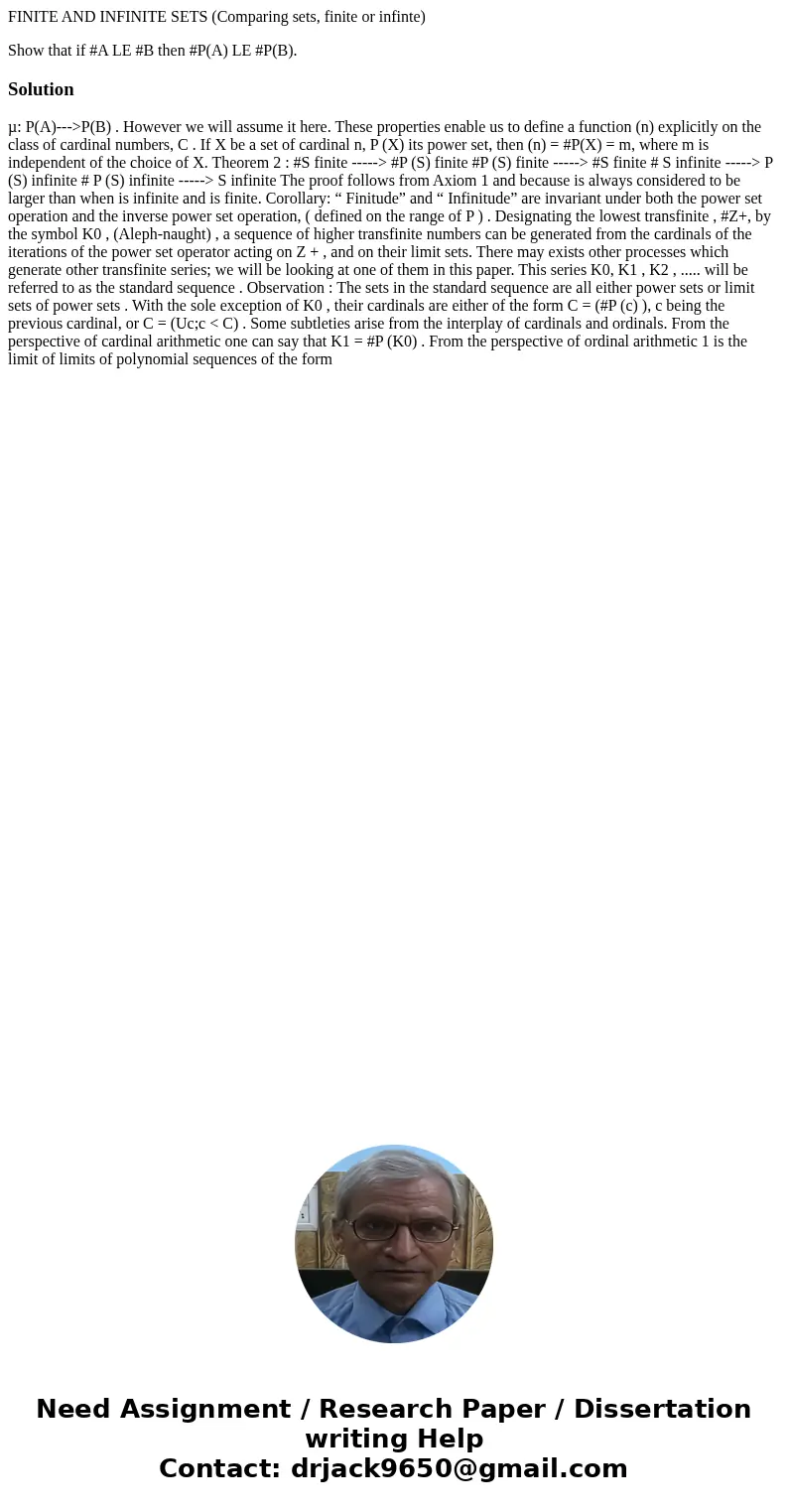FINITE AND INFINITE SETS Comparing sets finite or infinte Sh
FINITE AND INFINITE SETS (Comparing sets, finite or infinte)
Show that if #A LE #B then #P(A) LE #P(B).Solution
µ: P(A)--->P(B) . However we will assume it here. These properties enable us to define a function (n) explicitly on the class of cardinal numbers, C . If X be a set of cardinal n, P (X) its power set, then (n) = #P(X) = m, where m is independent of the choice of X. Theorem 2 : #S finite -----> #P (S) finite #P (S) finite -----> #S finite # S infinite -----> P (S) infinite # P (S) infinite -----> S infinite The proof follows from Axiom 1 and because is always considered to be larger than when is infinite and is finite. Corollary: “ Finitude” and “ Infinitude” are invariant under both the power set operation and the inverse power set operation, ( defined on the range of P ) . Designating the lowest transfinite , #Z+, by the symbol K0 , (Aleph-naught) , a sequence of higher transfinite numbers can be generated from the cardinals of the iterations of the power set operator acting on Z + , and on their limit sets. There may exists other processes which generate other transfinite series; we will be looking at one of them in this paper. This series K0, K1 , K2 , ..... will be referred to as the standard sequence . Observation : The sets in the standard sequence are all either power sets or limit sets of power sets . With the sole exception of K0 , their cardinals are either of the form C = (#P (c) ), c being the previous cardinal, or C = (Uc;c < C) . Some subtleties arise from the interplay of cardinals and ordinals. From the perspective of cardinal arithmetic one can say that K1 = #P (K0) . From the perspective of ordinal arithmetic 1 is the limit of limits of polynomial sequences of the form

 Homework Sourse
Homework Sourse